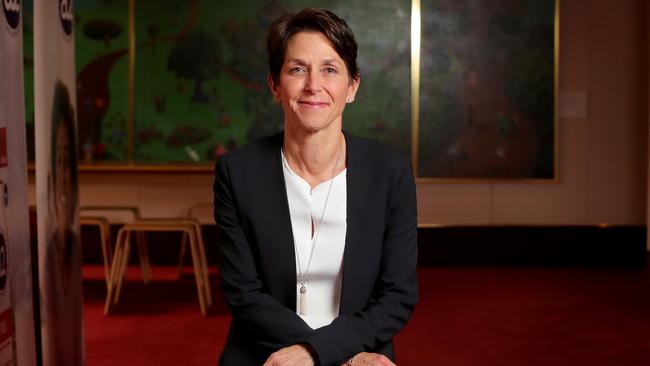
Westpac’s annual meeting on Thursday is expected to be long and brutal, as investors challenge chair Lindsay Maxsted and his board on their handling of the allegations against it by anti-money laundering agency Austrac.
Expectations are that the AGM will not result in the spill of the board, even if there is a second strike against the bank’s remuneration report. Investors may be keen to vent their anger but not take the radical step for a second meeting to spill the whole board.
Several proxy advisers are recommending against the re-election of Peter Marriott, a Westpac director since 2013, because of his role as chair of the board’s audit committee and membership of its committees on risk and compliance and the technology committee.
One proxy adviser is also understood to be recommending against the election of Nerida Caesar, a member of the risk and compliance committee and the technology committee.
Westpac director Ewen Crouch, a former partner with law firm Allens, has already chosen not to face re-election, given his critical role as chair of the board’s risk and compliance committee.
Independent directors are only meant to be part-time jobs with directors bringing their skills, intelligence and connections from other parts of corporate world to the board table. But the pressure on members of the Westpac board highlights a fact of life for those at the top of corporate Australia.
While there are no rules around how many boards a director can have, it is becoming clear that directors of listed companies, particularly banks, cannot have too many outside interests.
We are a long way from the “good old days” when being an independent director of a major company was a nice sinecure for a retired executive.
There is an old joke which used to do the rounds at the time.
Question: What is the difference between a shopping trolley and an “independent” director?
Answer: If you fill a shopping trolley with food and drink, it has a mind of its own.
These days, not only is an independent director expected to be across the issues affecting the company, particularly of the committees they are involved in, the Austrac allegations against Westpac have shown that regulators are prepared to put their roles under the spotlight in a more aggressive way than ever before.
Chairing a big four bank these days is almost a full time job in itself. When he was chair of Westpac from 2007 to 2011 former Treasury secretary Ted Evans did little else. The Australian Institute of Company Directors does not have rules on how many board positions a director should hold. But it acknowledges that there is now a much more active debate over the issue of “overboarding”
The ASX also has no firm rules. Guidance given by its Corporate Governance Council on the structure of the board notes that “the board or the nomination committee should regularly review the time required from a non-executive director and whether directors are meeting that requirement.”
“A non-executive director should inform the board and the chair of the nomination committee before accepting any new appointment as a director of another listed entity, any other material directorship or any other position with a significant time commitment attached.”
While the regulators now have directors in their sights, so do angry shareholders, fuelled by litigation funders. The big increase in class actions being brought by shareholders has led to a sharp increase in the cost of directors and officers liability insurance.
Writing in the October edition of the Company Director magazine, Ewen McKay, an executive with Axa XL, notes that the number of shareholder class actions against Australian companies has risen from an average of two a year before 2011 to 10 in the past few years. He estimates there have been a total of more than $1.8bn worth of settlements for class actions against Australian companies historically, with directors and officers liability insurers estimated to have paid out more than $1.1bn.
“The evidence points to a continuing deterioration of the directors and officers insurance market,” he says.
He estimates settlements in process mean that the market is expected to face its worst ever year on year underwriting losses over the next few years. In turn this will be reflected in higher premiums for directors. Another good reason for directors to focus their workload with fewer boards.
The issue of chief executives with important outside roles was also raised this week with the surprise resignation of Jayne Hrdlicka as CEO of A2 milk. In Hrdlicka’s case, her demanding role as a CEO and her role as chair of Tennis Australia added to the strains on her life.
Some A2 observers this week have raised the question of whether the board should have allowed her to continue in her role as head of a major sporting body.Hrdlicka took on the role as chair in October 2017 when she was running Jetstar, part of the Qantas group.
When she took on the job one observer predicted to this columnist that it was a sign she was considering leaving Qantas given the demands of both roles.
She left Qantas in April 2018 and took up her role as running A2 Milk in July last year.
These days, being involved in major sporting bodies is also time consuming with the public expecting high levels of governance and oversight.
As chair of Tennis Australia, Hrdlicka has ahead of her a busy summer with the Australian Open in January and an Olympics in Tokyo in July and August where tennis is a major sport.
Just how tough Thursday’s Westpac AGM will be for Maxsted and his board remains to be seen.
But recent events mean that directors and executives of corporate Australia will be under more pressure than ever to limit their outside workload.



